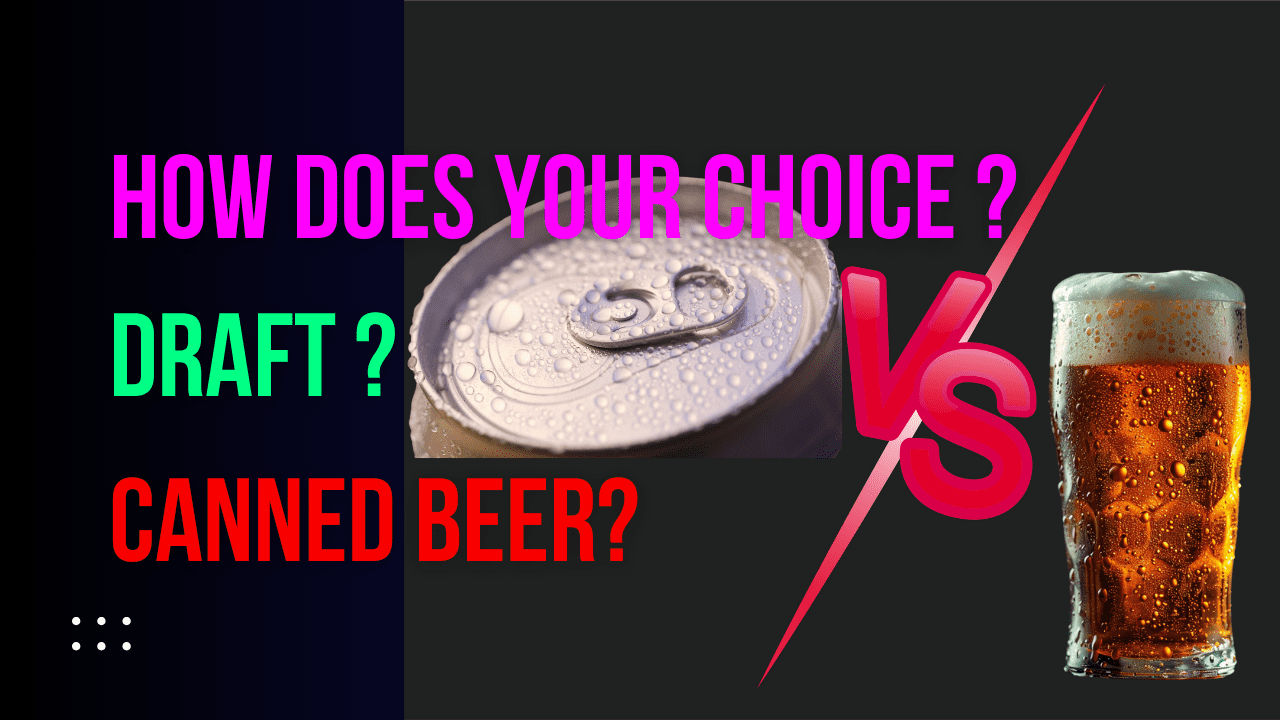Table of Contents
Introduction
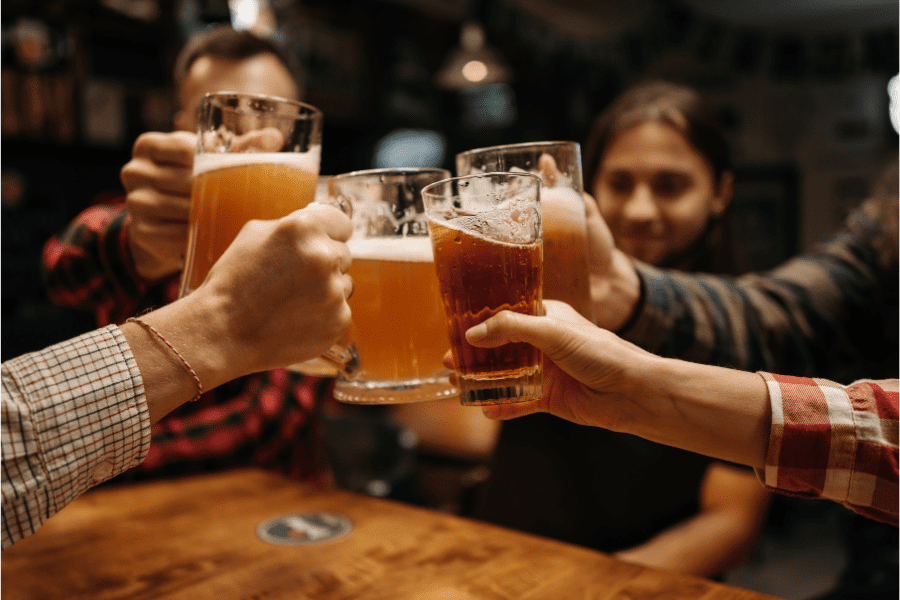
In the vast and varied world of beer, where the clinking of glasses reflects the diversity of cultures and preferences, the debate over whether canned beer can provide a tasting experience as satisfying as draft beer has sparked debate among beer enthusiasts, casual drinkers, and brewers alike. This age-old issue transforms pubs and bars into forums for amicable but impassioned debate.
As we embark on this flavorful journey, let us first raise a glass to the rich history and craft that have brought beer to its revered place in societies around the globe. Beer, in its myriad forms, has not only quenched thirst but has also brought people together, serving as a centerpiece for celebrations, discussions, and the simple joy of companionship. Whether drawn from the tap of a bustling pub or cracked open from a can at a beachside gathering, beer carries with it stories, traditions, and a sense of belonging.
Yet, beneath the surface of these frothy beverages lies a complex interplay of factors that influence the beer-drinking experience. From the freshness and flavor profiles enhanced by the serving method to the nuanced effects of carbonation and temperature, each aspect contributes to the debate between draft and canned beer. As we navigate through these considerations, we’ll delve into the heart of what makes each serving style unique, offering insights that might just sway your preference the next time you find yourself pondering over a beer menu.
So, join us as we tap into the essence of this discussion, exploring the differences that define draft and canned beer, and perhaps, along the way, discovering your own personal preference within this timeless debate.
The Brewing and Packaging Process: A Brief Overview
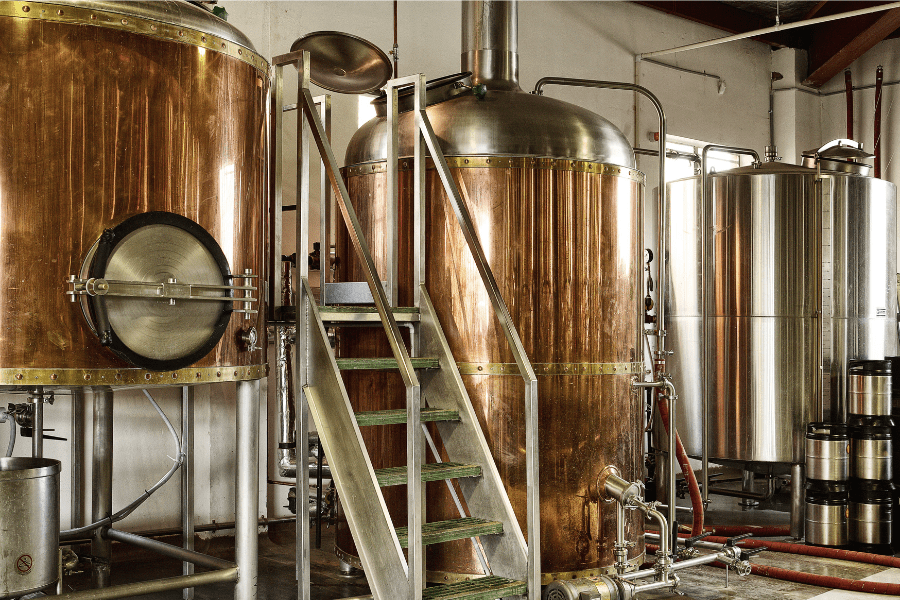
Before we can appreciate the differences between draft and canned beer, we must first grasp how beer gets from grain to glass. This journey starts in the brewery, where water, malted barley, hops, and yeast combine in a complex ballet of chemistry and workmanship. The method, entrenched in history and improved by contemporary technology, occurs in various stages.
- Mashing: The brew begins with mashing, which involves soaking malted barley in boiling water to liberate its sugars, resulting in a sweet liquid known as wort.
- Boiling: The wort is next boiled with hops, which contribute bitterness, flavor, and fragrance to balance the sweetness. This step also sterilizes the mixture.
- Fermentation: After boiling, the wort is cooled, and yeast is added to begin fermentation. Yeast transforms glucose to alcohol and carbon dioxide, changing the wort into beer.
- Conditioning: The beer is then left to develop, which can take anything from a few weeks to several months, refining the tastes and carbonation levels.
Once the beer has matured, it is presented with a choice: package it in kegs for draft service or cans (and bottles) for greater distribution. This choice represents a watershed point in beer’s history, determining not just its preservation but also its ultimate drinking experience.
Draft Beer Packaging: Beer for draft service is transported into kegs, which are enormous containers designed to protect the contents from the outside environment. These kegs are then linked to a tap system, which utilizes carbon dioxide or nitrogen to force beer through lines and into your glass. This procedure reduces the beer’s exposure to air, which is critical in maintaining its freshness and flavor.
Canned Beer Packaging: Meanwhile, beer intended for canning is packed into individual cans, a procedure that has seen major technical advancements to reduce oxygen exposure. Cans are firmly sealed to keep beer away from light and oxygen, which can speed up the staling process. This container option not only enhances the beer’s shelf life, but it also makes it more portable and accessible to a larger audience.
Understanding these procedures reveals the skill and science that go into beer production, as well as the first differences between draft and canned beer. As we continue on our voyage, remember the journey your beer has gone, from the careful hands of brewers until the time it is served, each taste carrying a distinct tale and flavor.
Freshness and Flavor: The Draft Beer Advantage
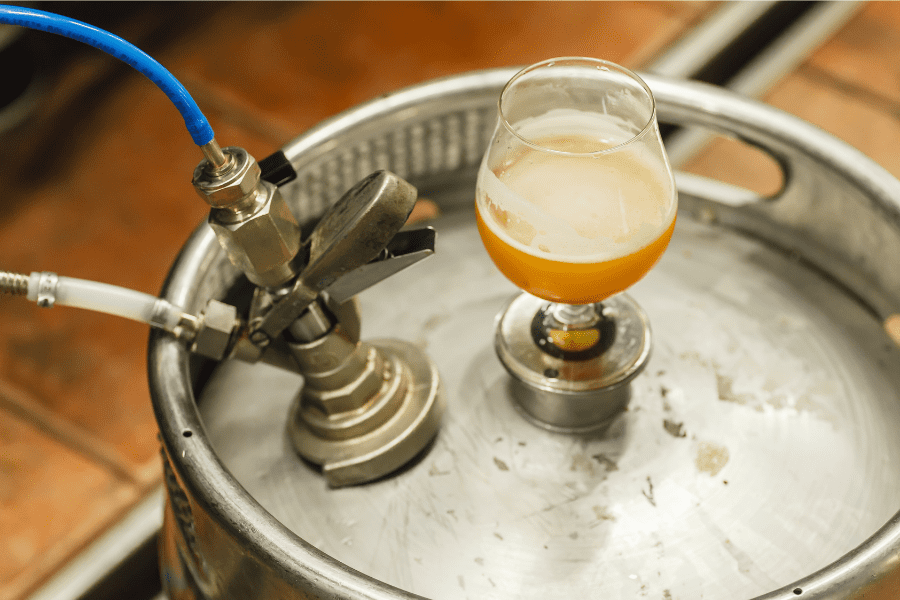
As we get further into the core of the beer argument, we come to a critical aspect that frequently tips the scales in favor of draft beer: the twin pillars of freshness and taste. Draft beer exposes its full character in the busy milieu of a local pub or the darkly illuminated ambiance of a brewery taproom, providing an experience that fans feel is superior to that of canned or bottled rivals.
The interaction between beer and its primary adversaries: oxygen, light, and heat, is important to this thesis. These factors are natural adversaries of beer’s delicate balance of tastes and aromas, each capable of reducing a once-vibrant brew to a ghost of its former glory. Draft beer, held in kegs and protected from light and air, finds itself in a strong position against these adversaries. A keg’s enclosed environment provides minimum oxygen exposure, which is painstakingly regulated from the time it is kegged to the moment beer pours from the faucet. This meticulous preservation is critical because oxygen may quickly initiate a chemical process that destroys beer, dulling the vibrant hops and rich, malty base, leaving a stale or cardboard-like flavor.
Light, too, offers a considerable concern due to its capacity to stimulate processes that change the taste character of beer. While canned beer is naturally shielded from this hazard, draft beer’s benefit stems from its kegged state, which is fully opaque to the harmful rays that can destroy the brew before it’s time.
Then there’s the issue of heat, which accelerates the aging process of beer, hastening the loss of its freshness. Draft systems, with their refrigerated lines and cooled kegs, keep beer at appropriate temperatures, reducing the aging process and retaining its original taste. This contrasts sharply with the various circumstances canned beers may endure as they travel from the warehouse to the retail shelf and eventually into the hands of the customer.
Draft beer generally leads the way in terms of freshness and taste retention. The direct trip from brewery to tap guarantees that the beer’s essence, which brewers have diligently cultivated, is experienced just as intended. The delicate flavors, from the flowery hints of hops to the sweetness or bitterness of the malt, are delivered in their full expression, allowing for a taste experience that is both profound and deeply delightful.
When we evaluate the importance of these aspects, it is evident that draft beer occupies a unique place at the core of the beer drinking experience. Its ability to provide an almost direct link to the brewery’s tanks while keeping the integrity of the beer’s character is a convincing reason for its popularity among people who value freshness and flavor above all else.
Finally, while both draft and canned beers have their benefits, the draft beer advantage appeals to those seeking the pinnacle of beer freshness and flavor. It’s a decision that, for many, embodies the essence of drinking beer at its finest.
Carbonation: Draft vs Canned Beer
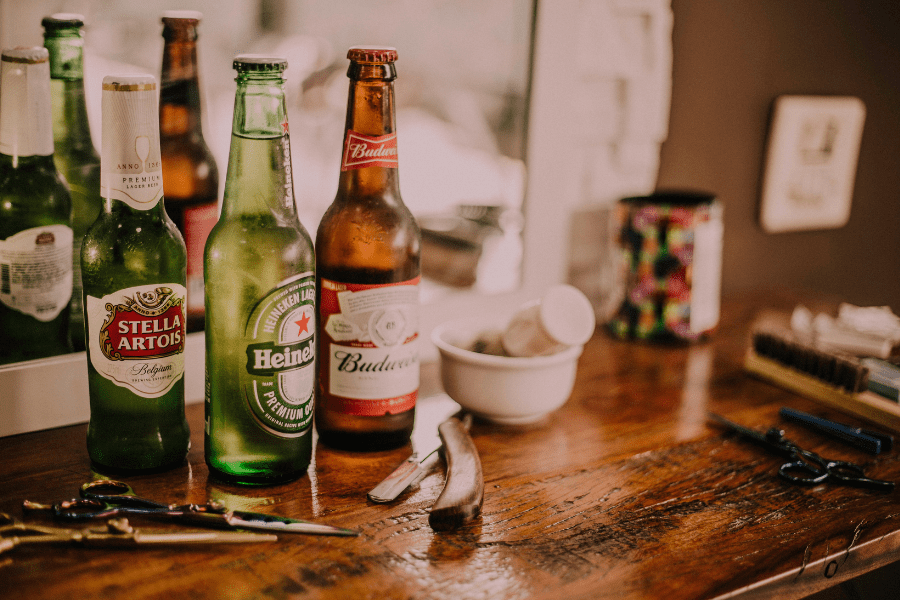
As our journey progresses, we arrive at a bubbly crossroads where the effervescence of beer – carbonation – becomes a key factor in distinguishing draft from bottled beer. This component is sometimes ignored yet is critical to the beer’s mouthfeel, flavor delivery, and overall drinking experience. Carbonation, or the presence of carbon dioxide (CO2) in beer, produces the small, lively bubbles that entice the palate and alert the senses to the beer’s taste profile.
Draft beer and canned beer approach carbonation in various ways, with each providing a distinct experience due to their respective packaging and serving techniques. Draft beer, known for its direct-from-the-brewery freshness, benefits from a more precise carbonation method. When beer is kegged, it is typically carbonated, either naturally during secondary fermentation or artificially by adding CO2 under pressure. Brewers rigorously tune this procedure to guarantee that the beer has the correct degree of carbonation when it reaches your glass. The end result is a beer with smooth, consistent carbonation and a clean, rounded mouthfeel that compliments rather than overwhelms the taste profile.
In contrast, canned beer goes through a somewhat different process. While it can be carbonated in a regulated manner prior to canning, the sealing procedure and subsequent storage can have an impact on carbonation levels. The natural carbonation that occasionally remains in the can, a byproduct of the beer’s fermentation process, might result in a slightly greater carbonation level than draft beer. This isn’t always a bad thing; for many beer varieties, particularly those that benefit from sharper, more obvious carbonation, canned beer may be a great way to experience a zestier mouthfeel and a more robust release of scents.
However, the difference in carbonation between draft and canned beer goes beyond the technical issues of how bubbles are delivered into the beverage. It’s also about how these bubbles affect the beer’s appearance and taste. Draft beer, with its somewhat lower carbonation, produces a creamier head, resulting in a smooth sip that allows the beer’s flavors and aromas to show through without being overpowered by excessive fizz. In contrast, canned beer’s lively carbonation can improve the sensory experience for some beer genres, highlighting the brightness of hops or the sharpness of a light lager.
In essence, the carbonation level of beer, whether draft or canned, influences the drinking experience. It demonstrates the art and science of brewing, since even the smallest bubbles may have a significant influence on how we perceive and enjoy our beer. Whether you enjoy the mellow effervescence of draft beer or the bright glitter of canned beer, understanding the function of carbonation may help you appreciate each sip more, making every beer-drinking experience into a journey of flavor, texture, and tradition.
Serving Temperature and its Effects on Beer
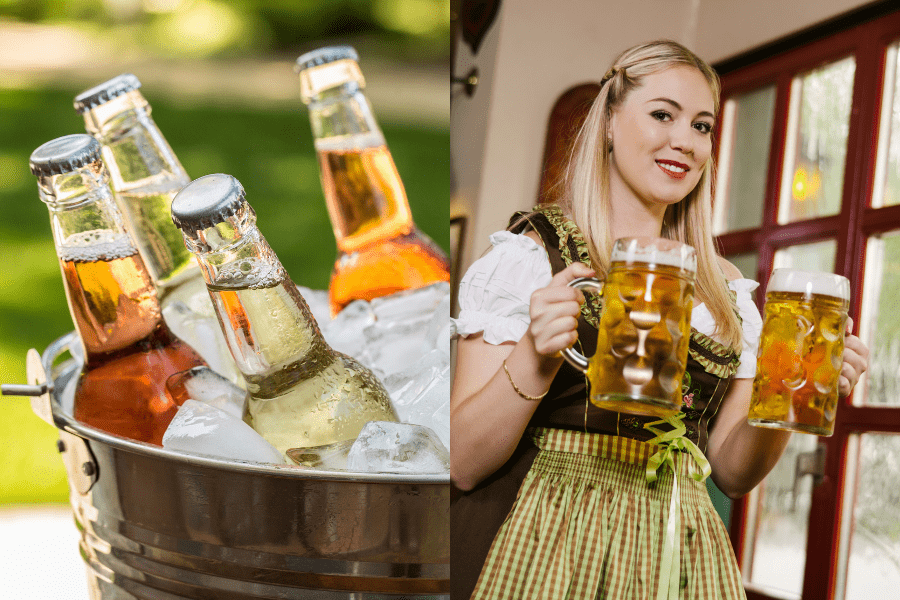
As we continue to explore the sensory experience of beer, we come upon a component that has a huge impact on its enjoyment and perception: the serving temperature. This feature, which is sometimes disregarded in informal situations, is critical in developing the beer’s taste profile and fragrance, and serves as a crucial distinguishing factor between draft and canned beer.
Beer’s natural features can be enhanced or masked depending on the temperature at which it is served, greatly affecting the drinking experience. The benefit of draft beer resides in sophisticated tap systems intended to cool beer to the appropriate serving temperature. These systems, prevalent in pubs and restaurants, keep beer in kegs at a constant coldness, ensuring that each pour is at the proper temperature for the style. Lighter beers, such as pilsners and lagers, benefit from cooler temperatures, which accentuate their freshness and refreshing. Darker, more powerful beers, such as stouts and porters, show off their depth of flavor and complexity when served somewhat warm.
Canned beer, on the other hand, is dependent on external chilling mechanisms like freezers or ice chests, which can be less exact. Cans successfully protect beer from light and air, but they do not provide the same level of temperature control as a keg in a draft system. This might cause changes in serving temperature, depending on how the beer was stored before to opening. If a canned beer is served excessively cold, it can numb the palate and mask the beer’s tastes and smells. Conversely, if it’s too warm, unwanted tastes may become more prominent, detracting from the beer’s desired essence.
The rigorous attention to serving temperature in draft beer systems ensures that each type is presented in the greatest possible light, allowing the consumer to experience the entire range of tastes created by the brewer. This is especially important for craft beers, where subtleties of flavor and fragrance are critical components of the drinking experience. A well-maintained draft system presents the beer in the way the brewer intended, from the nuanced interplay of hops and malt in an IPA to the deep, layered richness of a barrel-aged stout.
Furthermore, the ritual of delivering draft beer—watching it fall into the glass, the foam forming a flawless head—increases anticipation and improves the whole experience. This visual and physical delight, paired with the beer being delivered at the proper temperature, makes each sip a more satisfying experience.
In conclusion, the importance of serving temperature on beer cannot be overstated, with draft systems providing a distinct benefit in ensuring that each drink is experienced as it was intended. This meticulous temperature control, which is required to fully realize the flavor and fragrance of the beer, adds to the attractiveness of draft beer for those looking for a really heightened drinking experience.
Conclusion
As we conclude our investigation, it is evident that the dispute over draft vs canned beer is about more than just the liquid itself, but also about a variety of other aspects that influence the beer drinking experience. From the freshness and flavor benefits of draft beer, which is protected from the elements and served at the proper temperature, to the convenience and consistency of canned beer, which can be enjoyed in a variety of settings, the choice between draft and canned beer is frequently based on personal preference and situational desires.
Draft beer, with its legacy of freshness, regulated carbonation, and meticulous temperature regulation, provides an experience that many consider unparalleled. This way of serving beer is rooted in pub culture and the skill of brewing, resulting in a sensory experience that celebrates beer in its purest form. Meanwhile, canned beer, with its portability, longevity, and changing quality as a result of advances in packaging technology, is a practical and adaptable alternative that assures your favorite brew can join you on any journey.
Ultimately, the “best” beer is the one that fits the occasion, mood, and company. Whether it’s a casual beach picnic with a canned lager or a ceremonial pour of a keg IPA at your favorite pub, both experiences have a place in the rich fabric of beer culture. The charm of the beer world stems from its diversity and the particular adventures of discovery it provides to each consumer.
We urge you to explore with draft and canned beers in a variety of types and contexts. Pay attention to the subtle differences that each serving style brings out in your favorite beers. Share your experiences and tastes with friends and fellow beer fans, and keep an open mind to the surprises and joys that beer, in all its forms, may bring to the table.
In the end, the dispute over draft vs canned beer demonstrates the love and attention that goes into making, serving, and enjoying this ancient beverage. It’s a discourse that invites participation, promotes discovery, and celebrates the shared delight of understanding what makes beer so popular. Cheers to your next pour, whether from the tap or a can, and to the never-ending voyage of beer enjoyment.
Discover More
If this article made you happy and taught you something, I’m sure our next article will do the same for you. Each piece is carefully written to help you understand things better and enjoy reading more. So, to keep exploring and having fun, just click on this link to go to our next story.
